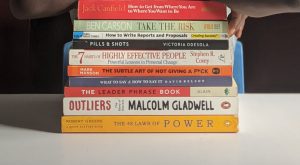
Every businessman should own a fine suit because it is the required business-related formal attire for meetings and occasions. A businessman’s attitude and charisma are enhanced by wearing a suit, which commands respect and brings dignity and elegance. Having a suit is crucial for a management leader, regardless of age. Selecting the ideal suit for every custom demand requires consideration of body form, fit, and material.
A tailored suit is one of the most important wardrobe investments for a businessman. A person in the business must have a good selection of suits available for any occasion, including formal events, board meetings, and everyday interactions. The personalized fit quickly alters depending on the person’s body type, height, and preferences as well as the numerous changes in fashion.
What you should Look for in a perfect Business Suit
The man’s business suit suggests a life free of physical labor and is a symbol of official power and professional identity. Since the last part of the seventeenth century, the three-piece suit has served as the foundation of the male wardrobe, allowing for variations in cut and materials. When the British throne was restored in 1660, King Charles II established the fashion for a new way of wearing. He was dressed in breeches, a vest (waistcoat), and a knee-length coat. According to Samuel Pepys, a diarist, “Oct 15th, 1666. The king starts putting on his vest today. It was a long, close-to-the-body cassock made of black fabric that was pinked with white silk underneath, with a coat covering it.”
British Court Style
Up until the middle of the 1720s, the freely cut knee-length coat with deep turned-back cuffs and beautifully wrought buttonholes served as the standard of the British court look. The distinction between the attire of the landed gentry and the middle classes dissolved as the British nobles spent more time on their country estates. Initially designed for riding, clothing was later updated to be appropriate for everyday use and even for more formal situations.
Influence of Sporting Dress
Sporting attire had a positive impact on people’s assessment of fit and finish. The practical and cozy woolen coat, waistcoat, and trousers remained largely unchanged throughout the eighteenth century. Due to the prevalent nonconformist religion’s necessity for abstaining from the overt display and the need for equestrian practicality, baroque beauty gave way to greater simplicity. By the 1780s, all occasions other than the most formal ones that required court appearances could be dressed appropriately.
The waistcoat was cut straight across the waist during the subsequent twenty years, and the turned-back cuffs, full coat skirts, and pocket flaps started to be polished. Knitted pantaloons were worn on the legs to create a long, slender silhouette in keeping with the early nineteenth-century fashion trend of classical revivalism, which sought to emulate the natural masculine ideal. George Bryan “Beau” Brummell, who was born in 1778 and became a model of sartorial precision and simplicity, personified this style.
Brummell, a personal friend of the Prince of Wales, who succeeded to the throne as Regent in 1811, and later George IV, popularised bespoke tailoring. The Burlington estate, where fashionable tailors had started to assemble in the late eighteenth century, was where he directed his patronage.
Savile Row
Savile Row had its first established tailor around 1806. By 1810, tailoring methods could create a plain coat with an exceptional fit and a focus on sculptural seaming and construction. The most distinguishing feature of the modern suit was the coat’s new collar, which curved around the neck and formed flat-lying lapels across the chest.
New Masculine Style
The roles that men and women played in the public and private spheres grew more distinct over the nineteenth century. The early nineteenth century is known as the time of “The Great Masculine Renunciation,” when men started to care more about propriety than the gratifications of ornamentation, according to psychologist J. C. Flügel. The numerous distinct male styles that emerged at the time can be used to refute the idea that men gave up their right to a choice of ornate attire and restricted women from enjoying decoration. The Paletot, for instance, debuted in the 1830s.
This jacket had a loose fit and no waist seam, and it was associated with some bohemianism. It was originally worn after lunch and exclusively in private, never on formal occasions or in the city. By the 1850s, it had been refined into the lounge jacket and was worn with a matching waistcoat and trousers, becoming the lounge suit. However, ready-to-wear variations in darker hues were being worn by city employees by 1920, when they gained credibility and started being worn to all business gatherings. It evolved into the universally useful male attire of the 20th century.
Mass Production
Technology advancements made it feasible to produce men’s suits in huge quantities, in regular sizes, and at a variety of pricing points, ensuring the suit’s long-term appeal. Due to the increased use of central heating in homes and workplaces during the middle decades of the 20th century, suiting materials grew lighter in weight.
Ivy League Look
After World War II, men’s clothing took on a more relaxed, young aesthetic; in America, the collegiate “Ivy League Look” took center stage. The Italian streamlined shape created by tailors in Milan and Rome had a significant impact as well. In the 1950s and 1960s, when London was starting to emerge as the center of teenage fashion, American and Italian suits influenced British tailoring. In Carnaby Street, John Stephen founded the first of his men’s clothing stores, selling bright, affordable, and enjoyable fashions. The clothing anticipated the hippie aesthetic by utilizing highly textured and colored materials as well as historical revivalism.
Traditional male clothing stores responded by attempting to create suits that combined elements of Carnaby Street’s quirks with something appropriate for professional attire. In 1965, Austin Reed, a men’s clothing retailer, bridged the gap between Carnaby Street and conventional tailoring by offering cutting-edge suits for the budding executive. Male-focused publications like Man About Town, which was initially released in 1961 and then renamed About Town and eventually just Town, firmly positioned fashion buying as a leisure pastime. Even the custom-made segment of the market was subject to change. The style press referred to Tommy Nutter as a “designer tailor” who took over Savile Row’s facilities and merged conventional skill with excessive embellishment.
Italian Luxury Ready-to-Wear
The emergence of Italian luxury ready-to-wear occurred in the 1970s and 1980s. Giorgio Armani in particular made a name for himself with his loose-fitting suits that blended comfort and elegance, connecting the liberalism of the 1960s with the ambition for monetary success that characterized much of 1980s society. The ambitious “yuppie” served as the embodiment of the suit’s comeback, which signaled a renewed seriousness about achievement. A lifestyle that comprised not only clothes but also iconic accessories like the Rolex watch and the Mont Blanc fountain pen was stressed by the expanding style press and the advertising sector. The emphasis on lifestyle marketing was supported by the merchandiser’s newly significant position, which was formerly undertaken by the buyer or designer.
Men’s stores started to resemble a gentleman’s club. Retailers such as Ralph Lauren and Paul Smith offered the “English aesthetic” alongside furnishings from an Edwardian gentlemen’s club, including leather-bound books, armchairs, and sports memorabilia.
The Brands you should checkout
Gucci:
Are you a daredevil at heart who likes to veer away from dull colors with interesting prints? In particular, Gucci provides the best selections for middle-aged guys. The Gucci design company is known for its attention to detail, elaborate patterns, and sharp suits. For the conventional businessman, the brand also provides options for traditional suits.
Givenchy:
This company, which was created in the global fashion hub of Paris, brings the best of French fashion to men’s suits. With gorgeous patterns, vibrant colors, and also comfortable fabrics, their sleek, structured, and smart suits also have a hint of daring.
Prada:
Who could refuse this well-known design brand, whose confident tailoring broke down barriers? The royal family has long preferred this brand, and with good reason. They are graceful masters of tailoring, showcasing the best characteristics of appearance to fit each body type.
Valentino:
Personal made-to-measure tailoring is a specialty offered by the Italian company. Customers can select their ideal attire from a wide selection of textiles that are offered. Have your name embroidered on the outfit as well; this is a nice touch.
Topman:
With more than 250 outlets currently operating in the UK, this business has gone a long way since its founding in 1978. For someone looking for all-day comfort, their inexpensive, stylish suits are a great place to start.
Saint Laurent:
Saint Laurent offers expertly cut suits that hide age and exude youth for all those fitness hunks who enjoy skin-tight looks. This brand typically keeps to sleek silhouettes while experimenting with cutting-edge materials and striking designs.
Todd Snyder:
This Iowa-born designer is committed to bringing modern gentlemen seamless premium apparel. Their suiting line is flawlessly fitted, laid-back, and elegant, fusing Savile Row workmanship with urban New York sensibilities.
Dolce & Gabbana
Their menswear line is worth every penny. It was founded in the middle of the 1980s, a time when fashion was drastically altering with the brightest colors and most popular styles. Dolce & Gabbana are the masters of tailoring if you’re looking for flamboyant jacquard prints or embroidered silk suits with a razor-sharp profile.
Bonobos:
This brand was more committed to providing every businessman with the ideal fit and all-day comfort. It dispels the myth that a suit needs to be too formal or inflexible to be worn all day. Their trousers strike the perfect balance between being neither too boxy nor too slim.
M.J. Bale
This completely original brand was developed by Matt Jensen in 2009 and is unmatched in every way. The goal of this brand is to provide outstanding quality so that the consumer is both fashionable and comfortable. Even for international trips, the brand offers dependable suits in a variety of appealing hues.
Hugo Boss
The classic German label has established itself as one of the most cost-effective luxury brands for men. Their tuxedos and suits are precisely tailored and produced from the best materials available. Hugo Boss is a terrific brand for suits, much like Porsche is the best-known name in cars.
Ted Baker
Their sleek suits feature a contemporary approach to tailoring because they are a British brand with an additional twist in terms of styling. Their tasteful variety will offer you a dashing appearance that will make you stand out instantly.
Reiss:
Reiss has developed a design ethos that is focused on producing tailored menswear and accessories since the company was founded in 1971. Reiss is known for its outstanding design, craftsmanship, and value because of its unwavering dedication to providing cutting-edge and unique items.
Hackett:
Pick Hackett suits to capture the sense of classic West London elegant fashion. Hackett, which was established on Portobello Road, is known for its immaculate tailoring and stunning suit colors combined with vibrant checks and stripes. For the creative businessman who enjoys experimenting with formal attire, there is Hackett.
Burberry:
Burberry offers a variety of suits for the ardent businessman, offering British heritage tailoring at a reasonable price. They draw design ideas from time-tested textiles, trimmings, and indigenous techniques that are continually updated for a stylish appearance. This renowned company, which was founded in 1856, is well recognized for its trench coats and distinctive plaid patterns. After over 100 years of a successful run, this brand has had a big impact on the British fashion business. Burberry suits have classic roots but also modern colors and fabric options.
Paul Smith:
Paul Smith provides the best options for examining the odd side of British tailoring. They are designed to give formal attire like suits a fashionable edge.
Brioni:
This brand’s selection of suits is ideal for the Bond style. The superbly cut ready-to-wear clothing exudes richness and sophistication. This company, which was established in Rome in 1945, has created suits for Pierce Brosnan and Daniel Craig, two James Bond actors. Their men’s runway presentations and haute couture runways are well-known in the fashion world.
Conclusion:
Elegant materials like tweed and wool can be worn in cooler regions, but in warmer climes, suits must also be eco-friendly. We have conducted extensive studies on the brands that work best for businesses.




